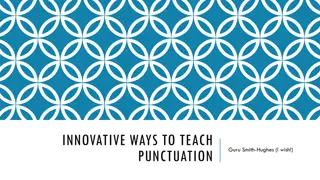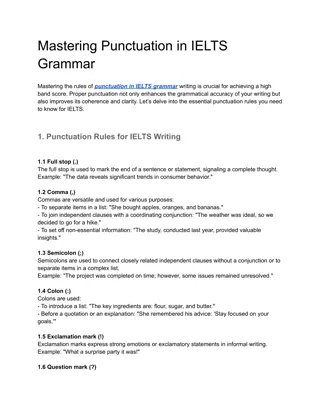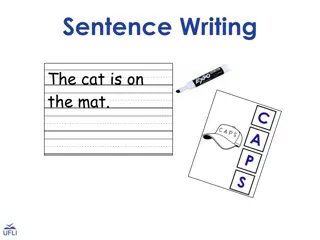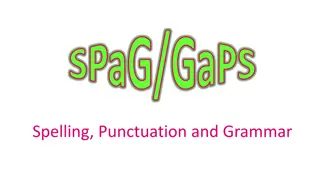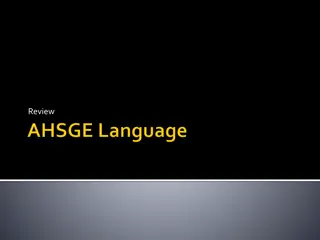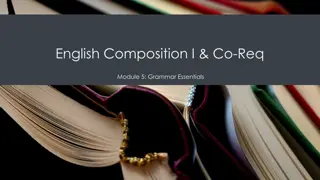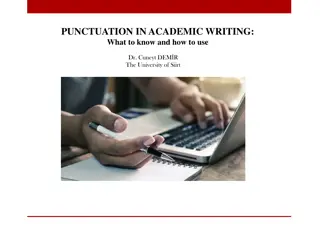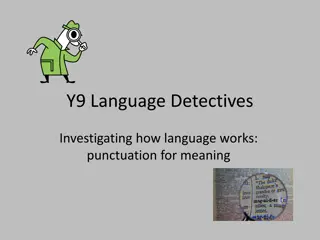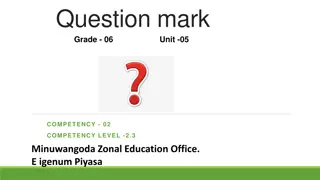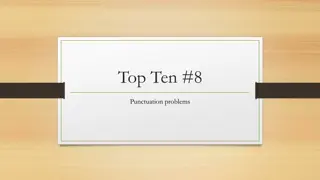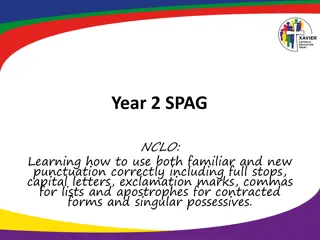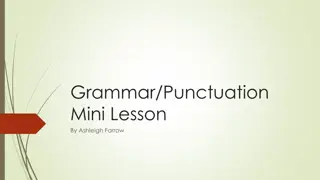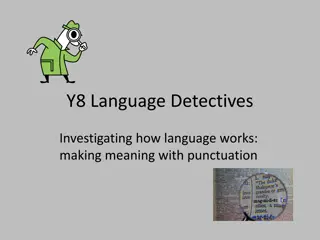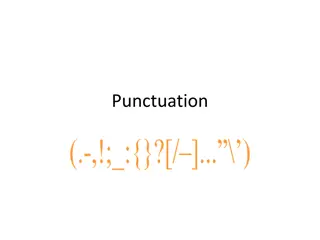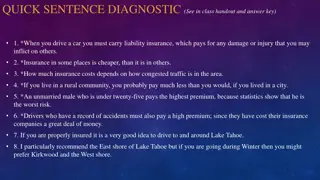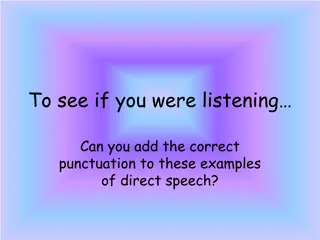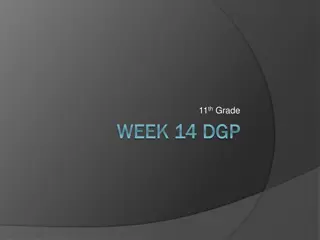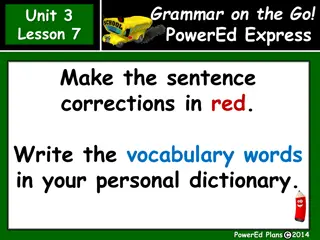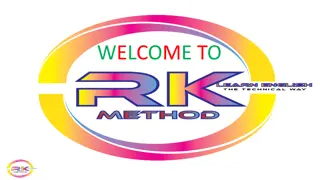Mastering Sentence Structure and Punctuation
Delve into the intricate world of sentence structure techniques and punctuation usage through engaging visuals and mnemonic devices. Learn how to identify and apply various sentence types, commands, questions, and minor sentences. Discover the impact of different punctuation marks on conveying attitudes and organizing thoughts effectively. Enhance your writing skills by mastering the art of sentence construction and punctuation application.
Download Presentation

Please find below an Image/Link to download the presentation.
The content on the website is provided AS IS for your information and personal use only. It may not be sold, licensed, or shared on other websites without obtaining consent from the author. Download presentation by click this link. If you encounter any issues during the download, it is possible that the publisher has removed the file from their server.
E N D
Presentation Transcript
Sentence Structure This can be a difficult area because there are so many different structure techniques There are different methods you can use to remember the main ones
Llamas! Really lazy llamas quietly sleep on pillows R L L Q S O P
Llamas! Really lazy llamas quietly sleep on pillows Repetition Length Lists Question Sentence type Order Punctuation
CRIPPLLLS C R I P P L L L S
CRIPPLLLS Climax Repetition Inversion Parenthesis Punctuation Length Lists Links Sentence type
Sentence Structure To answer a question on sentence structure you should take the following approach: State the technique being used quote where it being used Explain why it has been used and what effect is created (FUNCTION & EFFECT)
Sentence Type Revision Statement A simple sentence which includes one point or one fact: eg Orwell creates a turning point in A Hanging . Effect: impart information / reinforce argument Commands (Imperatives) A sentence which includes a clear instruction: eg Go read George Orwell s A hanging . Effect: to provoke an immediate response / reaction Questions Rhetorical Questions: where there is no answer or the speaker already knows what the answer should be: eg We don t kick grannies, do we? Effect: provoke agreement / disagreement / humour Minor Sentences where there is no verb
Punctuation A punctuation answer should a) identify the punctuation, then b) state its function and finally show its effect (the question will guide you on this). Eg Show how the writer s language conveys his attitude towards his mother s shopping habit. Colon introduces a list of all the items she purchased. This shows that he thinks his mother is wasting too much money on things she doesn t need. Punctuation Function Effect
Punctuation: Revision Colons: introduce - A list, further evidence, an illustration, a quotation Colons: balance - Two opposite ideas in the same sentence Semi-Colons (can do all the above) - Separate out parts of a list Dash - Create a pause / dramatic pause - Introduces further information or additional detail Parenthesis - Created by brackets, double dashes, commas - Add additional information
List Lists are usually easy to identify - Look for lots of semi-colons - Or commas and ask yourself whether a list is being created However you need to think about WHY a writer has chosen a list and the EFFECT of the list to his line of thought. Hint never talk about commas being used to create lists (the Higher marker isn t going to award marks for commenting on the comma) talk about: the writer uses a list (in line 5 and 6) in order to show that a lot of things were wrong with the shopping centre by descrbing the many negative aspects and visible damage
Repetition If in a sentence structure answer you find that you can t comment on punctuation or a list then consider if words or phrases are being repeated. This is the technique of repetition. Once you have identified the technique you need to identify the function of the repetition. The most likely answers are opposite. Eg Repetition of spend to draw attention to the fact that his mother can not stop spending and wasting her money. Function
Word Position Writers like to move key words usually to the beginning and ends of the sentences in order to make them stand out. This technique is called inversion. Luminous beings are we, not this crude matter. You would have expected We are luminous beings but by putting the word Luminous to the start of the sentence Yoda draws attention to one of his unique qualities. The effect of inversion is to create effects including drawing attention to something or surprise.
Sentence Length Short sentences are usually easy to spot but make sure it s short sentences you re spotting not short phrases or clauses. Short sentences are usually used either for dramatic impact or to draw attention to one thing. Long sentences usually build up an idea, often to a climax. Writers often like to juxtapose a long sentence with a short sentence to make the short sentence stand out by contrast.


